A critical service is down. Chaos ensues.
Support tickets pile up, emails flood in, and your team scrambles for answers. Sound familiar? This is a classic ITSM situation. But here’s where a CMDB saves the day.
With real-time visibility into systems, the CMDB pinpoints the root cause. One glance shows a configuration change tied to a failing application. Crisis averted.
ITSM and CMDB both aim to streamline IT operations. They’re like teammates — working together to keep your infrastructure running.
But here’s the twist: they’re fundamentally different. ITSM manages processes, while CMDB maps the tech behind them.
Curious how this dynamic duo operates? Let’s break it down.
What is ITSM?
IT Service Management (ITSM) is the backbone of IT operations. It’s a structured framework for delivering and supporting IT services in a way that aligns with business goals.
Think of ITSM as your IT team’s playbook. It covers critical processes like incident management, change management, and service delivery. The focus? Ensuring IT services work seamlessly and support business success.
It’s not just about technology. It’s about creating efficient workflows, clear responsibilities, and reliable service outcomes.
Example:
Meet Jake, an IT Operations Manager at a sprawling enterprise.
It’s Monday morning. Jake’s still sipping his first coffee when an alert pops up: a critical application has crashed. Users are flooding the help desk with tickets, and chaos is brewing.
Jake’s team dives into action. They’re juggling spreadsheets, sifting through logs, and running diagnostics. They’re trying to pinpoint the issue. Could it be a server failure? A network glitch? A rogue update? With no CMDB to guide them, it’s like finding a needle in a haystack.
Hours pass. Tensions rise. Finally, they trace the issue to a misconfigured server buried deep in the infrastructure. The fix is straightforward, but the time lost? Painful.
Sure, ITSM kept the process moving, but without a CMDB, Jake’s team spent precious hours troubleshooting blind. A CMDB could’ve turned that haystack into a map.
What is CMDB within ITSM?
A CMDB is the cornerstone of IT Service Management, centralizing all IT assets and their interdependencies.
It’s not just a list of what you have. CMDB is a dynamic system that tracks relationships and configurations. It also monitors changes across your entire IT ecosystem. This enables IT teams to understand how different components interact. It ensures seamless service delivery and efficient troubleshooting.
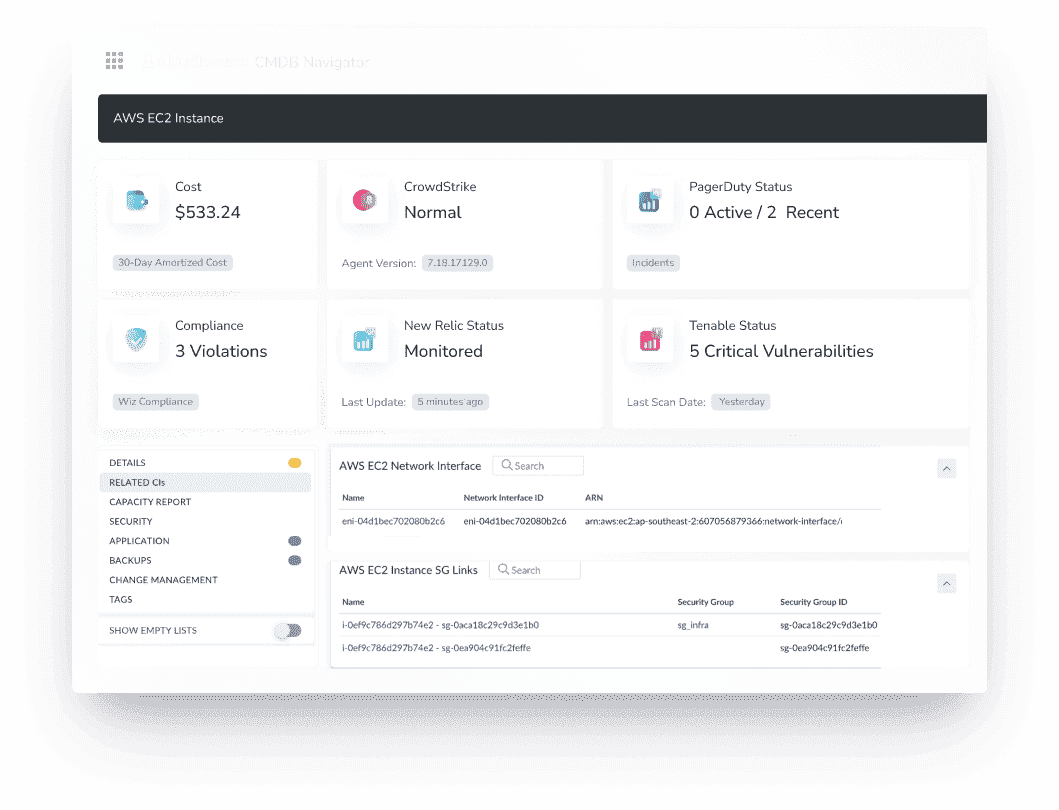
In essence, a CMDB provides the 'single source of truth' for IT operations. It empowers teams to make data-driven decisions and manage IT services with precision;
Example: How CMDB works within ITSM
Meet James, the IT Operations Lead at a global enterprise. His team manages a sprawling hybrid setup — AWS, Azure, GCP, and an on-prem data center.
One afternoon, chaos strikes. A key service running on Azure goes down, triggering a flood of user complaints. James needs answers fast.
He opens the CMDB, which holds a detailed map of his infrastructure. Right away, he spots the affected CI — a virtual machine on Azure. The CMDB also shows its relationships: the VM connects to a load balancer and a database hosted on AWS.
What’s next? Using the CMDB’s change history, James finds that a recent configuration update on the AWS database caused the crash. A misconfigured patch broke the link.
Thanks to the CMDB, James’s team pinpoints the issue within minutes. They roll back the update, restoring service before it turns into a PR nightmare.
Read also: 📌 Top 13 CMDB tools: Choose the best configuration management database
Why the CMDB Matters in ITSM? Find the answer below 👇
Why CMDB is a must-have part of your ITSM strategy?
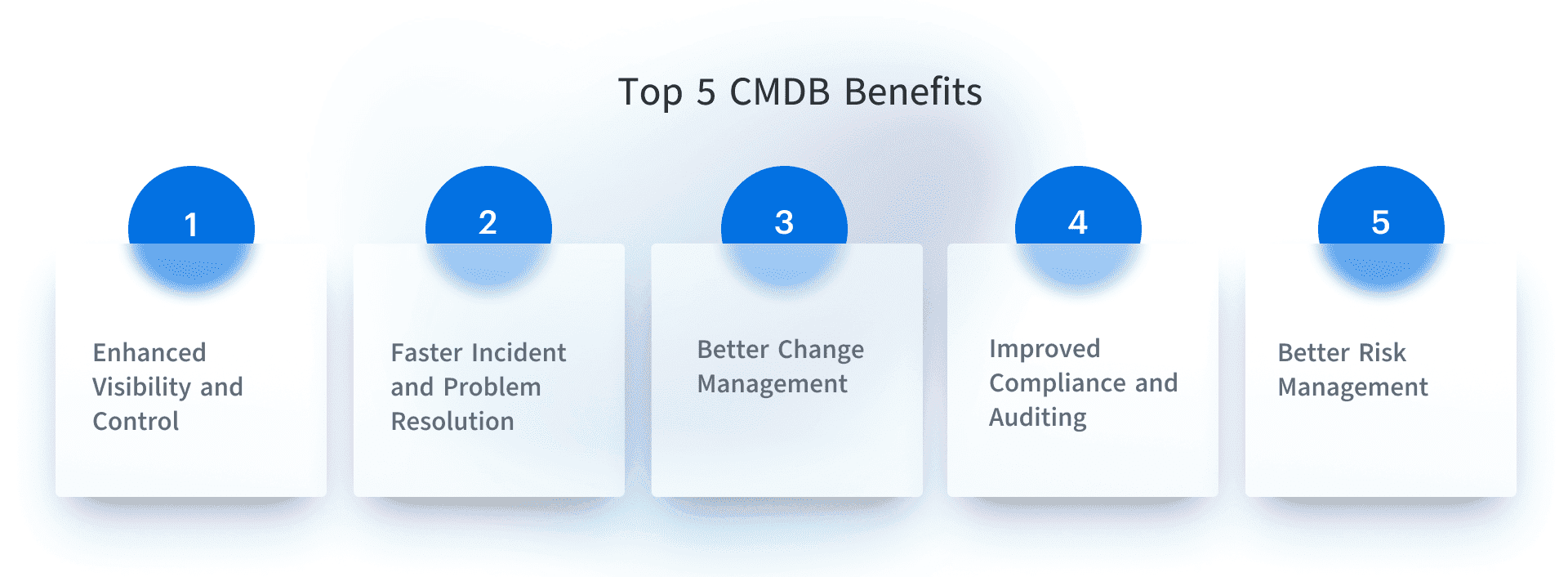
Why is a CMDB a must-have part of your ITSM strategy?
- Enhanced Visibility and Control. In ITSM, understanding the “what” and “how” of your infrastructure is key to proactive service management. A CMDB gives you a clear, real-time map of all your IT assets and their relationships.
For one Cloudaware client managing a hybrid environment, the CMDB offered crucial visibility. It showed how resources across AWS, GCP, and on-prem systems supported their services. When issues occurred, this visibility made it easy to identify impacted areas and maintain service levels.
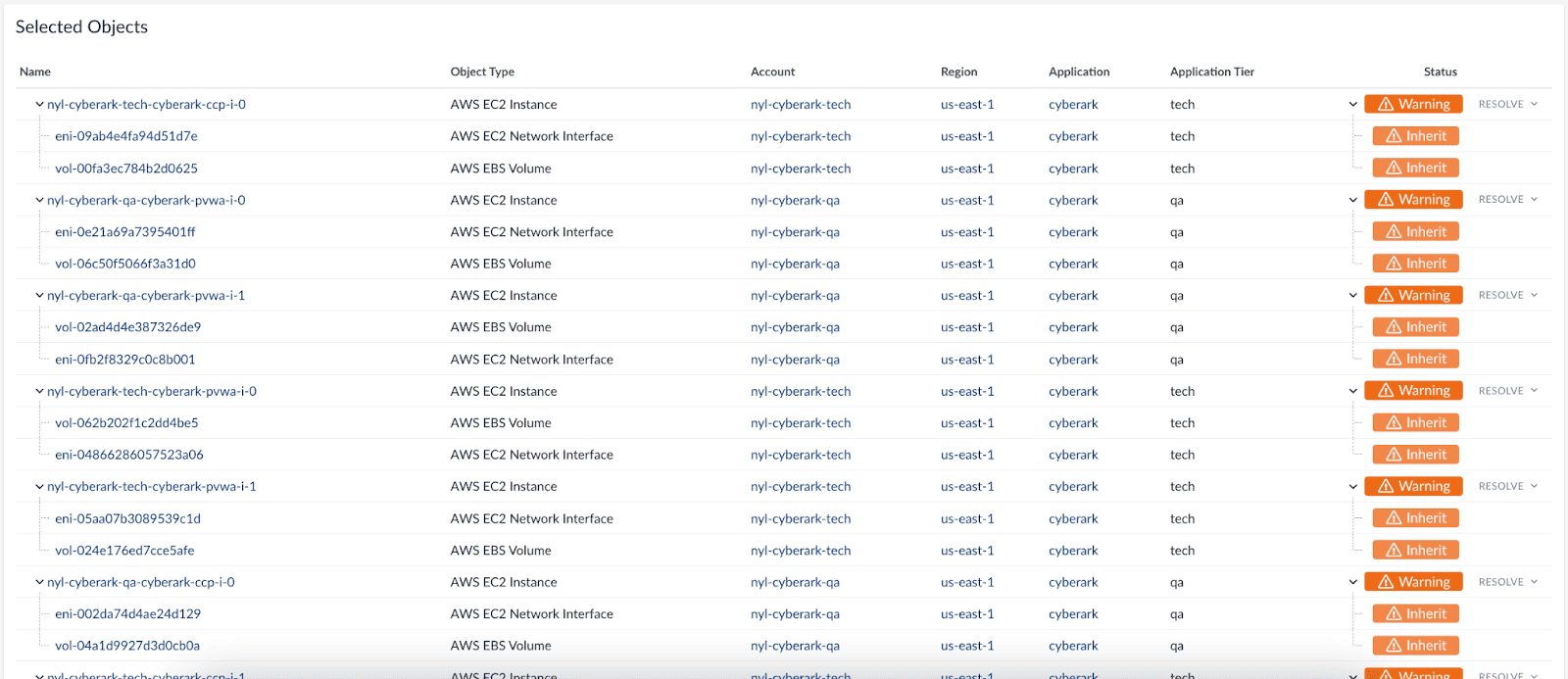
- Faster Incident and Problem Resolution. ITSM is all about quickly and efficiently addressing issues to minimize disruption. A CMDB accelerates incident resolution by mapping out dependencies between systems. One client faced a network outage affecting several critical applications. Thanks to the CMDB’s relationship mapping, their IT team quickly identified the root cause — a misconfigured switch. This reduced troubleshooting time from hours to minutes. This helped them restore service faster, reducing downtime.
- Better Change Management. Change management is a cornerstone of ITSM. When changes are made to infrastructure, it’s crucial to understand their potential impact. The CMDB plays a central role here by helping you map out those changes.
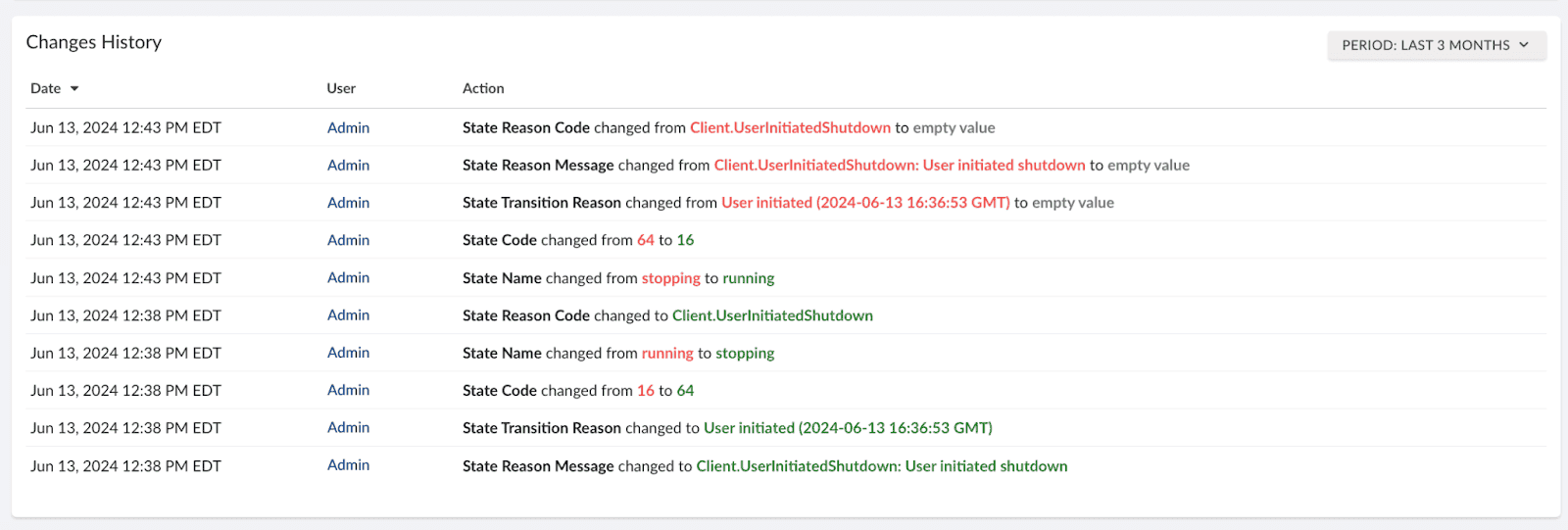
Thus, one client was deploying a major application upgrade. The CMDB helped trace dependencies between the application's critical components, such as application servers, databases, and network services. This allowed them to assess the upgrade's impact and ensure a smooth, conflict-free change. - Improved Compliance and Auditing.
Compliance and auditing are a core part of ITSM, ensuring that services are aligned with regulatory requirements. A CMDB supports these processes by tracking configuration data, asset ownership, and changes over time.
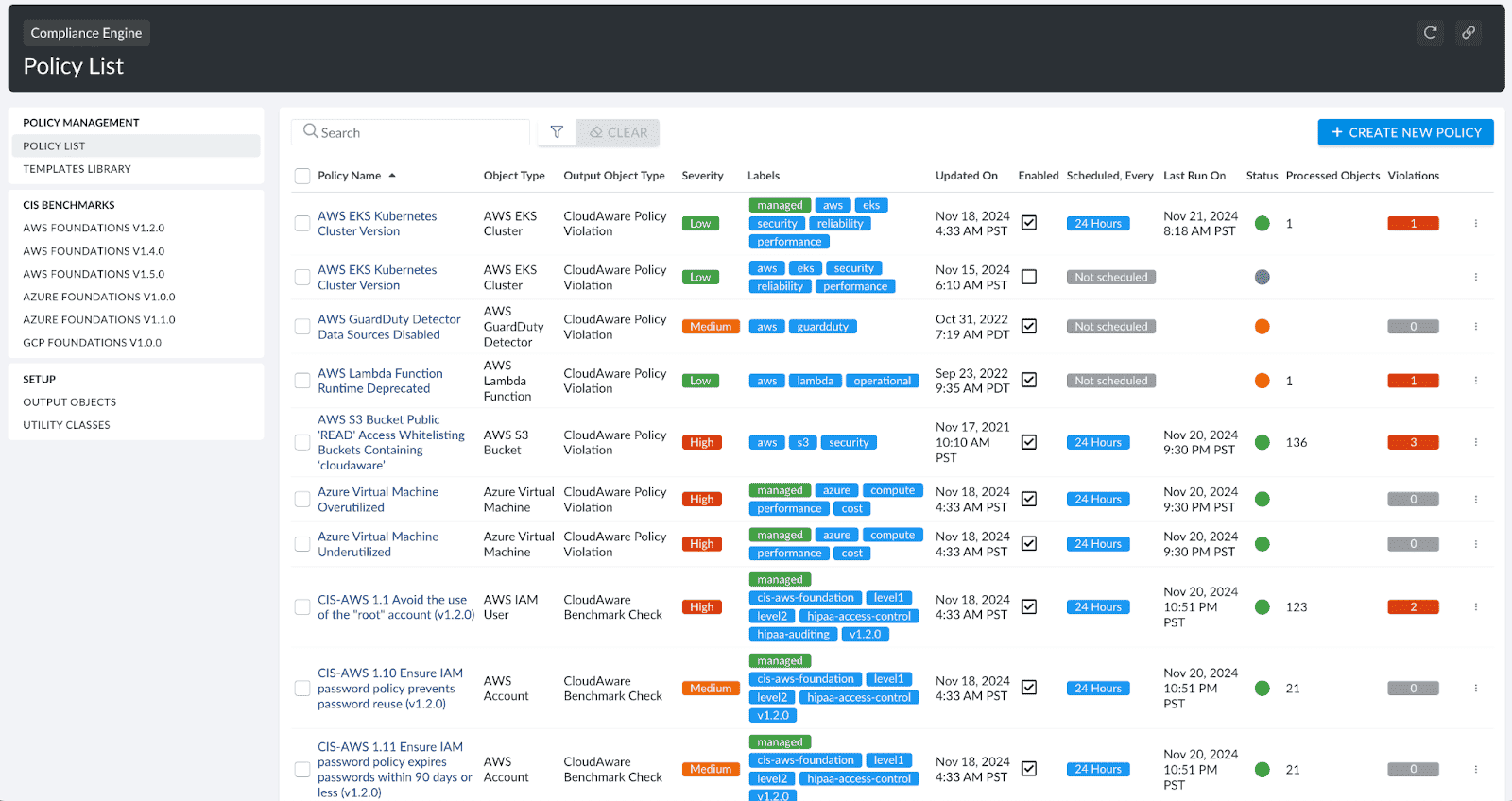
One Cloudaware client needed to prove compliance with strict data protection regulations. The CMDB tracked changes, helping meet regulations and pass audits easily. - Better Risk Management.
Risk management in ITSM is about anticipating and mitigating potential service disruptions. The CMDB makes it easier to identify and manage risks by showing you how components interact.
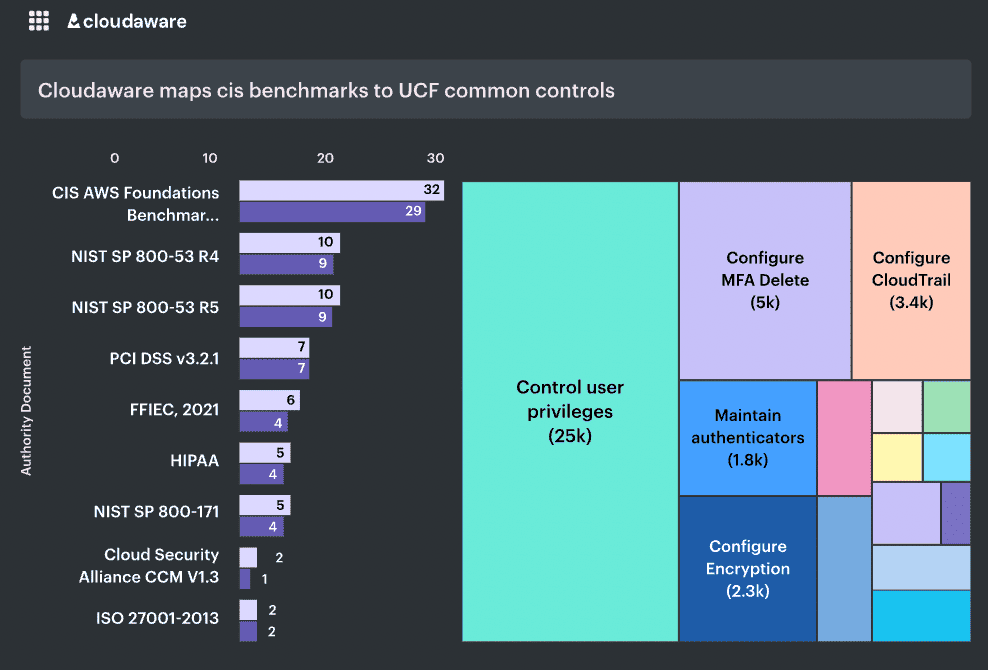
One client used the CMDB to assess the risk of service disruptions from changes in their cloud infrastructure. Understanding interdependencies — such as the relationships between cloud services, on-prem databases, and critical network components — allowed them to reduce failure risks and improve risk management. - Proactive Service Monitoring and Maintenance.
In ITSM, providing uninterrupted services is the ultimate goal. A CMDB helps you monitor your infrastructure for any potential issues before they cause problems.
For a client using Cloudaware, the CMDB offered real-time insights into the health of their cloud services. This visibility enabled the team to spot issues before they impacted service.
Now that we’ve outlined the benefits of a CMDB in ITSM, you might wonder: How do they work together, and what sets them apart?
A CMDB provides visibility and control, while ITSM ensures seamless service delivery. They’re complementary, but they each have their distinct roles.
Let’s dive into the key differences between the two 👇
Focus
Here’s the crux: ITSM manages how services are delivered, while CMDB tracks what makes up those services.
- ITSM is process-driven. It’s all about how IT services are delivered, managed, and improved. Think workflows like incident management, which focuses on resolving outages efficiently. Change management ensures smooth updates, while service delivery meets end-user needs on time. ITSM aligns IT actions with business goals, ensuring seamless operations. It also prioritizes minimizing downtime.
- CMDB, on the other hand, is asset-centric. It’s the master catalog of all your IT resources — every CI like virtual machines, databases, APIs, load balancers, and applications. But it doesn’t stop at inventory. The CMDB maps asset relationships and connections across multi-cloud and on-prem environments.
Example: Incident Management
An enterprise experiences a critical email outage. ITSM ensures a structured approach to incident resolution. It handles logging issues, assigning tasks, and sharing updates. But resolving it efficiently requires context, and that’s where the CMDB shines.
The team traces the outage to its root cause using the CMDB. A misconfigured AWS virtual machine was affecting the email server. The CMDB identifies the machine and tracks its dependencies, showing how the misconfiguration disrupted the email server and impacted the load balancer for internal tools. By mapping out these dependencies, the team quickly understands the ripple effect and resolves the issue.
With this insight, the IT team knows exactly what to fix and avoids unnecessary trial-and-error. ITSM orchestrates the workflow — escalations, approvals, and resolution. The CMDB ensures they’re working with actionable, accurate data. Together, they turn hours of guesswork into minutes of resolution.
ITSM keeps the wheels turning. CMDB ensures you know exactly what those wheels are made of — and what happens if they change. Together, they make your IT operations unstoppable.
Coverage
- ITSM is the maestro of IT service lifecycles. It orchestrates everything from designing new services to keeping them humming and evolving.
Processes like incident management, change control, and service requests? That’s ITSM’s turf. Its scope stretches wide, focusing on workflows that align IT with business goals. - CMDB is the master mapmaker. Its focus is cataloging Configuration Items like servers, databases, apps, and rogue containers. It doesn’t manage processes but supports them with rock-solid data.
Need to track relationships between a virtual machine in Azure and its backend database in AWS? CMDB’s got you.
Example in Action: Tackling Downtime
Picture this: an enterprise-wide HR system goes down. ITSM swings into action, logging the incident and assigning a team to resolve it. CMDB uncovers a patch mismatch in the middleware causing the crash.
ITSM coordinates the fix, while the CMDB ensures the right patch gets applied. Problem solved, and the HR system is back online without guesswork.
Bottom line of CMDB vs ITSM scope? ITSM covers the service journey. CMDB provides the x-ray vision. Together, they’re a powerhouse for IT teams managing hybrid infrastructure.
Data Management: CMDB vs ITSM
- ITSM deals with operational data. Think incident logs, service request records, and change approvals. This data is structured around workflows, ensuring services run smoothly. But ITSM focuses on “what’s happening” and “what needs doing,” not the nitty-gritty of infrastructure.
- CMDB dives deep into asset data. It catalogs servers, VMs, databases, and even SaaS tools. Each entry includes configurations, states, and dependencies — such as how servers depend on databases, or how cloud applications interact with on-prem systems. This relational data maps 'what exists,' 'where it is,' and 'how it connects.' CMDB doesn’t just track — it provides a 360-degree view of your IT environment.
Example: Data in Action
An enterprise manages a hybrid IT setup with multiple clouds. ITSM tracks operations: logging incidents, managing change requests, and monitoring service SLAs. It knows what needs attention but doesn’t explain why.
CMDB holds the answer. It shows that the application’s downtime is linked to a misconfigured Azure load balancer. Its data shows dependencies between the load balancer and an on-premises database.
With CMDB feeding precise asset details into ITSM, the team doesn’t waste time digging. ITSM uses this data to respond: fix the issue, restore service, and prevent SLA breaches.
Why It Matters?
ITSM operates with process-driven data. CMDB thrives on asset-specific data. Together, they bridge the gap between operations and insights, giving IT teams the full picture they need to act swiftly.
Integration with other processes
- ITSM Loves Processes. It’s the orchestrator of IT operations, defining workflows that handle the lifecycle of IT services. ITSM streamlines processes, from incident management to change control and problem resolution. It’s the playbook for service delivery, resource allocation, and operational continuity. ITSM aligns workflows with business goals, boosting efficiency and reducing downtime.
- CMDB Connects the Dots. At its core, a CMDB is a dynamic catalog of CIs — servers, VMs, databases, storage arrays, and even cloud-native services. But it’s not just about listing assets; it’s about understanding the relationships and dependencies between them, such as how a server interacts with a database or how a cloud service relies on on-prem infrastructure.
CI info within Cloudaware CMDB.
For example, knowing that a specific server supports a critical application gives context to ITSM processes. When a change request comes through, CMDB data informs ITSM whether dependent services will be affected. Without this level of detail, ITSM operates in silos, risking missteps and inefficiencies.
The Common Ground? They Play Nice. ITSM is process-driven; CMDB is data-centric. Together, they ensure your IT operations aren’t just managed — they’re optimized.
Why It Matters? Without CMDB, ITSM lacks context. Without ITSM, CMDB’s insights aren’t actionable. Integration isn’t just a bonus; it’s essential to managing complex environments seamlessly.
Let’s deep dive in the role of CMDB and ITSM in main processes of the IT team 👇
Role in cybersecurity
ITSM provides a structured framework for security operations. It focuses on security incidents, service continuity, and change management to minimize vulnerabilities. ITSM standardizes security processes, making them auditable and repeatable for consistent threat mitigation.
ITSM ensures systematic security patch deployment and compliance through detailed workflows.
CMDB supports cybersecurity by tracking IT assets, configurations, and their relationships. In a cyberattack, CMDB helps pinpoint which systems are vulnerable, making it easier to prioritize response.
Configuration data helps teams protect assets and act quickly during breaches.
Role in FinOps
ITSM is not just about keeping things running; it’s about making sure they don’t break the bank. Every time a new service is requested, or a change is proposed, ITSM steps in to make sure the costs are reviewed and approved first.
It’s like your financial watchdog, ensuring that every IT move stays within budget and aligns with the business's financial goals. No surprises here!
CMDB keeps track of every single IT asset, from those shiny new cloud instances to the old on-prem servers that still need some love. So, when a cloud resource is barely used, CMDB raises its hand and says, “Hey, this is costing you money for nothing.” That’s your cue to scale back or shut it down — saving you cash in the process.
Here is an example of one of the FinOps dashboards in Cloudaware:
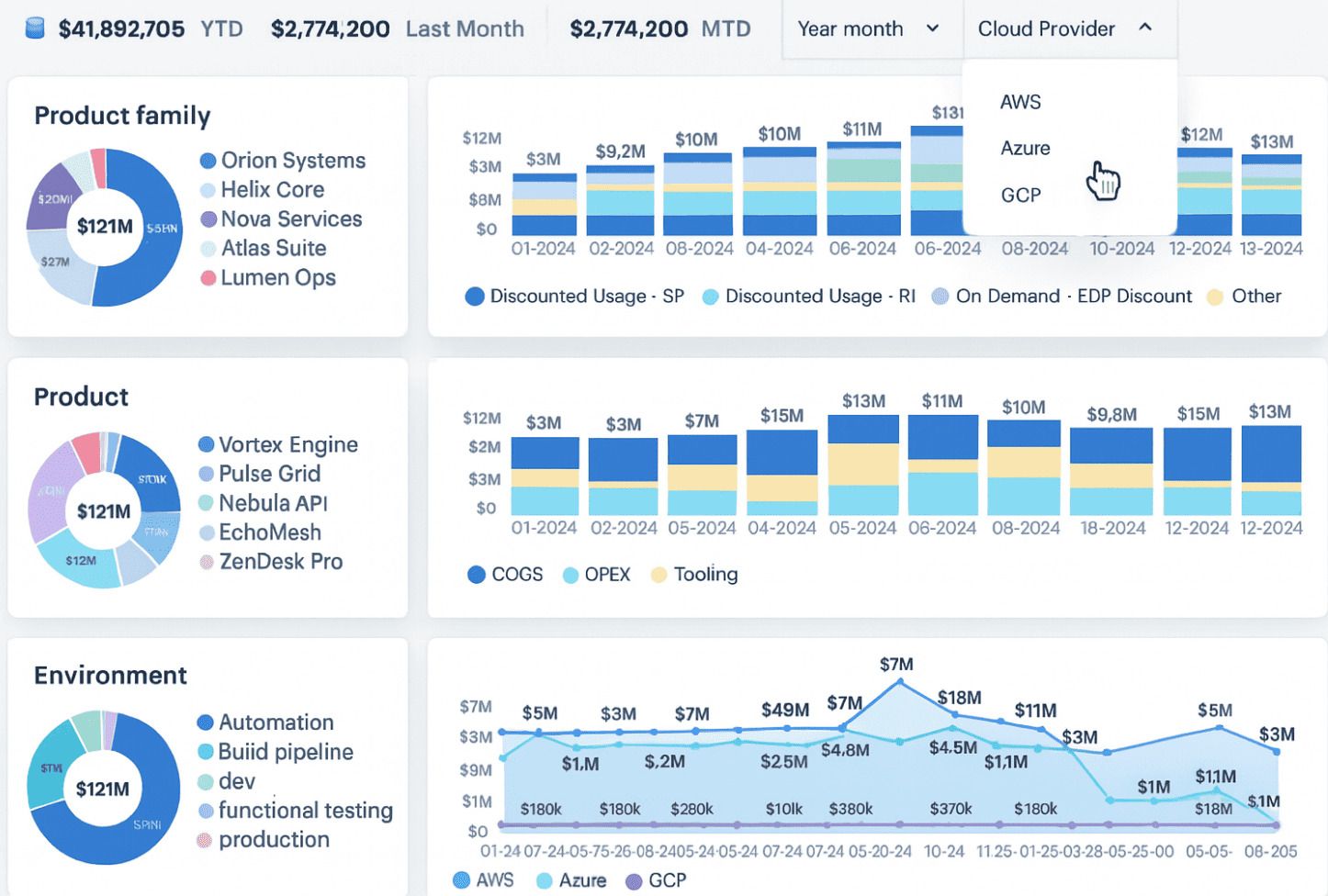
ITSM + CMDB = Financial Harmony
When ITSM and CMDB work together, magic happens. ITSM manages costs, while CMDB provides asset insights to support decisions. Together, they give you the full picture of your IT spending, ensuring you’re getting the most bang for your buck. It’s like a power duo — keeping costs under control while making sure everything runs smoothly.
Role in compliance and risk management
The CMDB is your asset control center. It tracks everything, from cloud instances to on-prem servers. When managing compliance, having a complete, organized view of your IT environment is essential.
Take GDPR as an example. The CMDB helps ensure sensitive data is classified correctly and stored securely. It flags where data is stored, who can access it, and how it’s protected. Without this, you're left navigating a sea of regulations without a compass.

ITSM ensures everything is documented, tracked, and controlled. It’s all about following the right processes. When changes happen in your environment, ITSM ensures they’re properly authorized and tested first.
Let’s say you need to deploy a critical patch. ITSM ensures patches are tested, approved, and deployed in compliance. That means no surprises that could lead to a compliance violation.
Incident management is another area where ITSM shines. If something goes wrong, ITSM ensures the incident is tracked, resolved, and analyzed to prevent future risks or breaches.
Strategic insight and tactical precision
The CMDB is your strategic asset. It offers a comprehensive map of your entire IT landscape. From cloud infrastructure to on-prem hardware, every asset’s details are captured. This insight ensures well-informed decisions and timely resource allocation.
For example, when planning a network upgrade, the CMDB shows which systems depend on the current infrastructure. This visibility lets you plan changes without disrupting critical services.
ITSM focuses on executing day-to-day tasks with precision. It focuses on managing workflows. These include incident resolution, service requests, and change management. ITSM ensures that every process is handled methodically, from logging the issue to implementing the fix.
For example, when an employee requests a new laptop, ITSM ensures the process is efficient. The request is processed, approved, and fulfilled without delays or errors.
Why there’s no Vs. between ITSM and CMDB
CMDB and ITSM aren’t rivals — they’re a dynamic duo. Think of ITSM vs CMDB as a comparison between action and insight. CMDB is the brain, providing the data. ITSM is the muscle, using that data to execute workflows. Together, they create a seamless IT operation.
ITSM and CMDB work hand-in-hand. CMDB gives ITSM the crucial information it needs. From CIs to relationships between assets, it ensures ITSM has the full picture. ITSM uses processes like change management and incident resolution. This ensures everything stays on track. It governs how the data in the CMDB is used, making sure things are done according to plan.
The result? Strategic insight and tactical precision. CMDB provides the necessary context, and ITSM makes sure everything runs smoothly. Together, they keep your IT operations running efficiently, minimizing risk and maximizing value. No competition here — just perfect synergy between ITSM and CMDB.
Gain Complete Visibility into Your IT Infrastructure with Cloudaware CMDB
Cloudaware CMDB is built to support IT Service Management (ITSM) by providing a comprehensive, real-time view of your IT landscape. It automatically discovers and maps both cloud and on-premises assets while enriching them with critical data—covering costs, vulnerabilities, patch statuses, and business impact.
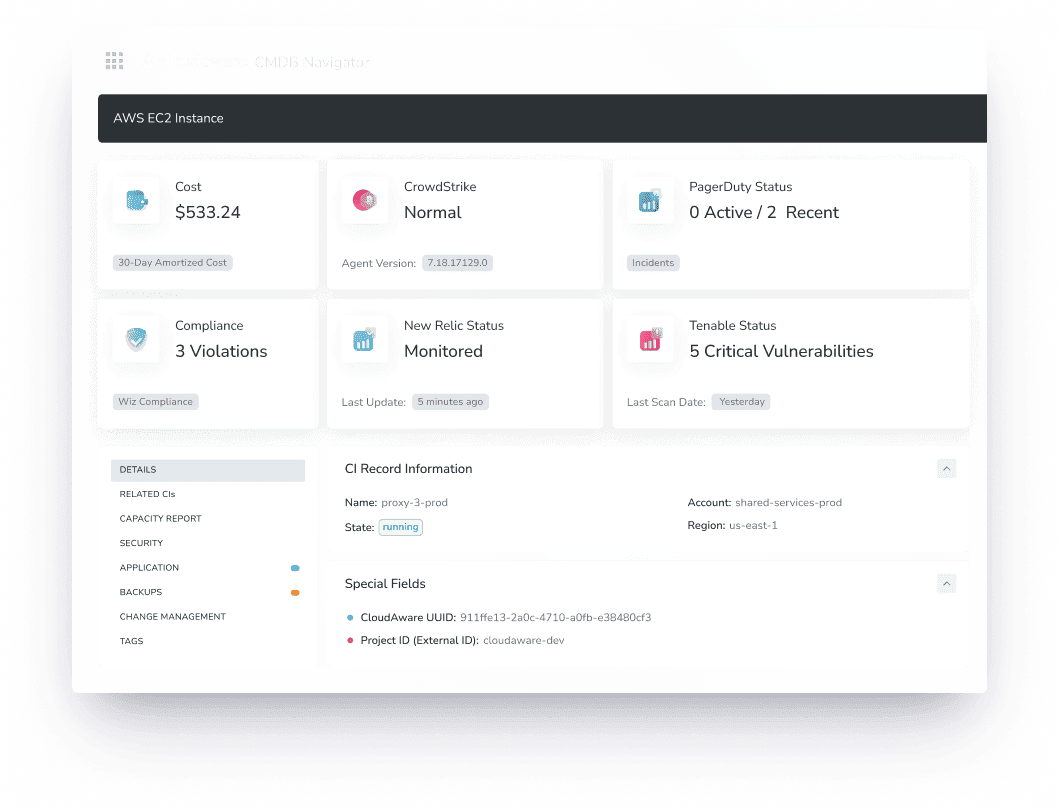
By integrating seamlessly into ITSM workflows, Cloudaware CMDB helps organizations manage incidents, changes, and configurations with full context. Automated dependency mapping ensures a clear understanding of how services, applications, and infrastructure components interact, reducing downtime and streamlining root cause analysis.
Key Capabilities:
- Automated asset discovery across hybrid environments
- Dynamic relationship mapping for better incident and change management
- CIs data enrichment from cloud and third-party sources for complete context
- Customizable dashboards and reports
- Built-in security and compliance modules
Read also:
📌 The best configuration management software: Top 10 tools review
📌 Top 7 CMDB best practices for your 2025 [Tech Expert Review]
📌 Master Cloud Configuration Management: Tools & Tips
📌 CMDB Configuration Items: How CI Drive Configuration Management Database?
📌 What Is Configuration Management? Definition. Processes. Recommendations
📌 NASA Case Study
